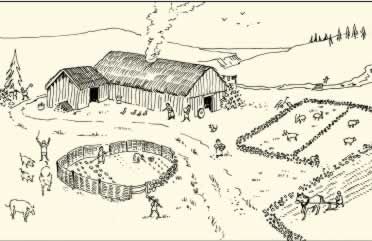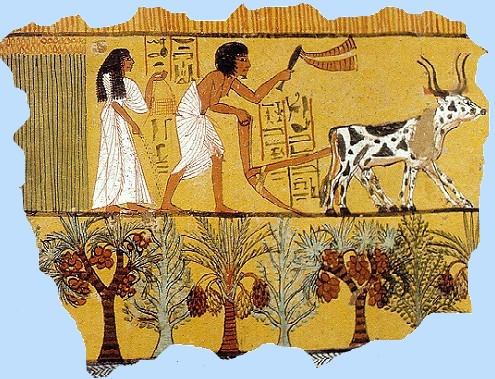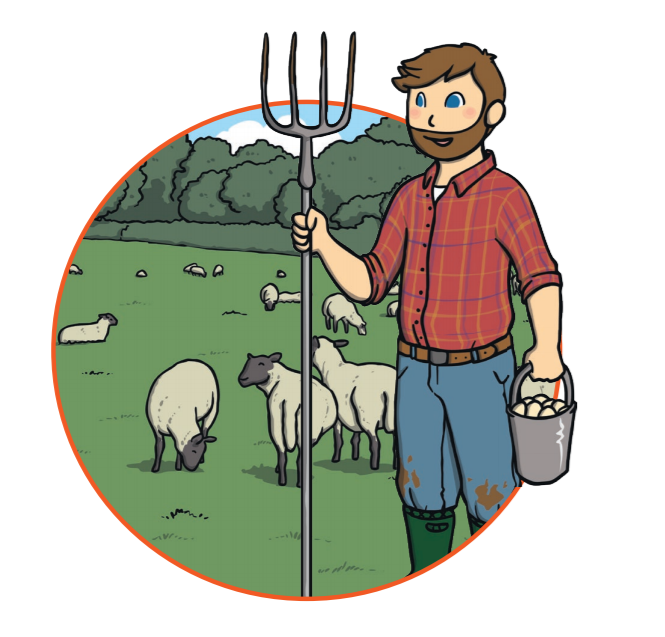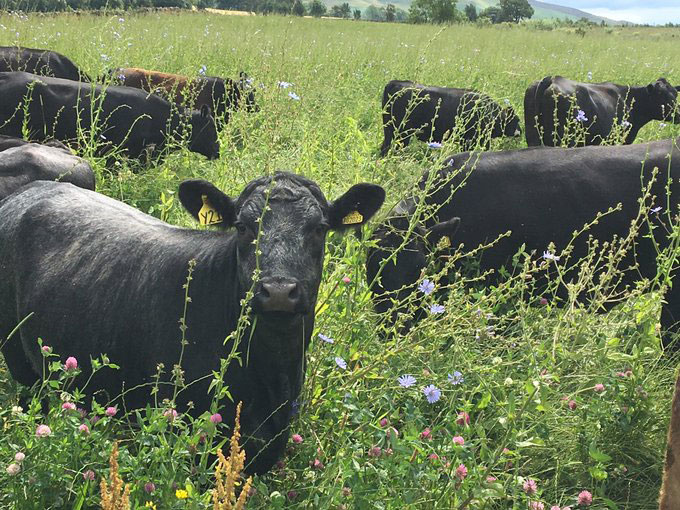What is Agriculture?
To answer the question of what is agriculture, let's look at the definition first, then we can dive into history, learn how agriculture started and how it looks today.
Agriculture is the science of farming, it includes the cultivation of soil for growing crops, rearing animals to provide food, wool and other products, and harvesting grown crops as effectively as possible.
It is agriculture that has allowed human civilization to expand to the great heights that it is at today, and it is agriculture that took humanity from the simple hunter-gatherer way of life to a more complex society.
The Origin of Agriculture
Agriculture was not ‘invented’ in a single flash of genius by one of our ancestors. The domestication of plants and animals happened very gradually over centuries, and often independently around the world. Though, such a development was only made possible after the last great Ice Age, when climates around the world became more stable and human populations could thrive again.
Historians have been able to track the development of agriculture in four major places around the world, the earliest signs come from the Middle East and China, before it spread into the Mediterranean and Europe and finally developed independently again in the Andes and mountains of South America. Let's dive back into time and see how each of these civilizations used the skills of agriculture to improve their world.

Middle East
The hunters and gatherers of early human societies, particularly in the fertile crescent (modern day Turkey, Syria and Iraq), were experts on the plants and animals around them, the movement, needs and abilities of each animal was well known to these people because they relied on that knowledge to feed themselves and their children.
Around 11,000 BCE, people began to protect and herd the wild herds of goats, sheep, cows and pigs that moved up and down the valley. They also harvested wild cereals such as einkorn, emmer, and barley. At first, the methods they used were random and unorganized, people will pull weeds out of the ground to promote the growth of more of the plants they ate, or they would bring water from the river to water the plants. They would herd the animals simply, but did not build farms for them yet.
At around 8800 BCE, scientists noticed a change in our genetics, for the first time humans in this area had switched from eating primarily wild food to primarily farmed food.
China
Agriculture developed entirely independently in China and other countries of the far east of Asia. Findings at archaeological digs suggest that pig herding was being used as a method of food production as far back as 10,500 BCE in the Yellow River Valley.
By 8000 BCE, this same area had become a centre of millet cultivation and, alongside the industry of pig farming, sustained large villages such as Cishan. The domestication of wild rice soon followed and is still a stable ingredient in Asian cooking to this day.
Europe
The development of agriculture within Europe differs slightly from its development in China or the Middle East, early European societies benefited from the work done by the societies in the Fertile Crescent. Knowledge was traded back and forth between the cultures living on the shores of the Mediterranean for many centuries, and with it came the knowledge of farming.
Look at how farming came to Neolithic Ireland and developed over thousands of years with this fantastic PowerPoint.
Around 7000 BCE, farming was introduced to areas that would become modern day Greece, Italy and Spain, before moving north into Central Europe. It is thought that new arrivals from Africa, Asia and the Middle East brought with them domesticated plants and animals and elsewhere, local people adopted the same skills.
Once the skills had been taught, the art of farming exploded in Europe, with much of the land well suited to growing plants and feeding livestock.
The Americas
In the Andes mountains of South America, people experimented with cultivating potatoes and other root vegetables around 5000 BCE. They used llamas and alpacas to help them plough the soil, and even farmed the local guinea pigs as a source of food.
The hunter-gatherer way of life existed alongside farming here because there were far fewer species of animals suited to domestication and the land was more difficult to farm.

How did agriculture change human civilization?
The cultivation of crops and animals allowed humans to evolve beyond the nomadic lifestyle they had relied on for many thousands of years. Hunter-gatherer societies had to rely on the movements of animals, and this could lead to periods when hunting was very fruitful (but they could not store the meat for long) or periods with very little to eat.
Once more permanently, settlements were established around farming communities, people were able to store food that they could use during the winter months when hunting and gathering wasn’t possible. It also meant that for the first in human history, people could specialize into different tasks, until the advent of agriculture, each person dedicated their time to food production for themselves, their family and their communities. Once farming took hold, people had more food than they needed. They had time to develop new ways of building, new tools and new skills such as art, blacksmithing, and even music.
Let's have a deeper look at some changes and innovations that were made possible by agriculture.
Population Growth
The earliest farming villages were small huddles of mud-brick houses, nestled together and separated by narrow spaces. These soon started to grow as more animals were added to the herds and as more crops were planted. Jericho, in the Jordan Valley, is one of the earliest villages known to have flourished in this way. By 8000 BCE the population had gone from a few families to a huge community of hundreds who created stone houses and a wall to protect their town and animals.
The ability to produce more food from a smaller area of space allowed population’s to grow together and develop into towns and even cities. Without that, our society would not be possible.
Better diets
Scientists have looked at the remains of humans from throughout our history and following the agricultural ‘revolution’, they saw a marked increase in the amount of food and quality of food available to be eaten. People no longer had to survive on the food that they could immediately find, they were able to split up their meals and foods. Cereal grain become a staple part of the diet in the Middle East, China and Europe, along with bread, porridge, water, milk, and a variety of high protein meats.
Such a stable diet saw changes in human health, with less evidence of intestinal diseases or even worms!
Specialization
Living in farming communities meant that not everyone had to be working towards producing food all day, every day. A network of people would live together for generations, this meant that they could develop specific skills and roles in their communities. For example:
- Some people herded and gathered animals
- Some people worked on the farms and cropland
- Others prepared food
More importantly, not everyone had to have a job on the farm:
- Some people started to make pottery or build houses
- Some could become traders or merchants
- Some people could develop tools for better farming
Without the diversification of all these skills, we would not have invented all the wonderful technology and creations that we have today.
What does agriculture look like now?
Now, we certainly don’t farm our crops and look after our animals the same way we did 10,000 years ago. After ten thousand years, our skills and understanding of agriculture has increased beyond the wildest dreams of those early farming villages.
We can now make use of the incredibly technological advancements of the human race to create enough food for billions of people around the world, to offer a variety of diets and types of food from fish and livestock to grains, fruits and vegetables. 21st century farming is even looking to benefit the planet through sustainable and organic farming methods.

Mechanized agriculture
Current mechanized agriculture includes the use of tractors, trucks, combine harvesters, countless types of farm implements, aeroplanes and helicopters (for aerial application), and other vehicles. Precision agriculture even uses computers in conjunction with satellite imagery and satellite navigation (GPS guidance) to increase yields.
Mechanization was one of the large factors responsible for urbanization and industrial economies. Besides improving production efficiency, mechanization encourages large scale production and sometimes can improve the quality of farm produce
Let's look at some old equipment and new with this Farm Equipment Comparison Cards.
Free-range farming and care for animals
Free-range denotes a method of farming husbandry where the animals, for at least part of the day, can roam freely outdoors, rather than being confined in an enclosure for 24 hours each day. On many farms, the outdoors ranging area is fenced, thereby technically making this an enclosure, however, free-range systems usually offer the opportunity for the extensive locomotion and sunlight that is otherwise prevented by indoor housing systems. Free-range may apply to meat, eggs or dairy farming.
In ranching, free-range livestock are permitted to roam without being fenced in, as opposed to intensive animal farming practices such as the concentrated animal feeding operations of the past. In many agriculture-based economies, free-range livestock are quite common.
Farmers truly and deeply care for animals, which is often a reason they chose farming as a career. From a sustainability perspective, animal welfare is regularly emphasized as being a social responsibility of farmers. Farmers deeply care for animals and do their utmost to ensure that they are cared for and kept healthy.
Animals are a vital aspect of the lives and livelihood of farmers and as such, making sure they are happy and healthy is very important to keeping their business alive. From a sustainability perspective, the long-term success of farming is reliant on healthy animals
Local and organic farming
Organic farming is an agricultural system that uses fertilizers of organic origin such as compost manure, green manure, and bone meal and places emphasis on techniques such as crop rotation and companion planting. It originated early in the 20th century in reaction to rapidly changing farming practices
Since 1990, the market for organic food and other products has grown rapidly, reaching $63 billion worldwide.
Find out more about how farming has changed with our Changes to UK Farming Lesson Plan.



0 Comments